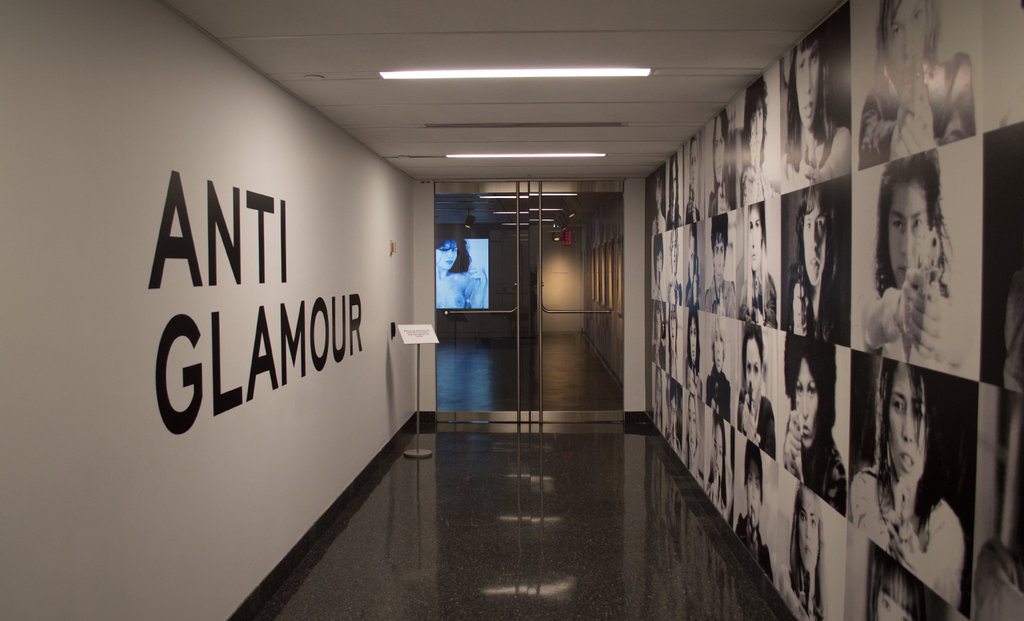When walking into Ryerson Image Center’s Burn With Desire exhibition the viewer is immediately faced with the colorful iconic silkscreens of Marilyn Monroe famously done by Andy Warhol. Hanging across from Warhol’s pop-prints is Richard Avedon’s famous black and white print accompanied by several Gene Daniels’s images of Monroe at the 1962 Golden Globes. This first room, entirely devoted to the Monroe and her glamourous lifestyle, conflates the commercialization of Warhol’s images with the reality of Hollywood.
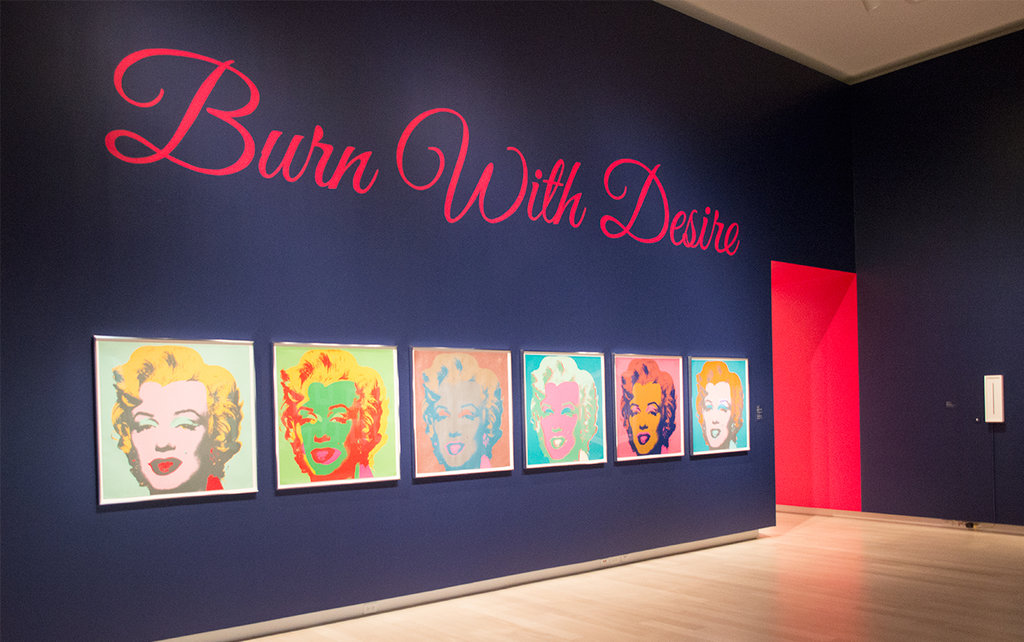 The Entrance to Burn With Desire with Collection of Marilyn Monroe silkscreens by Andy Warhol, 1967
The Entrance to Burn With Desire with Collection of Marilyn Monroe silkscreens by Andy Warhol, 1967
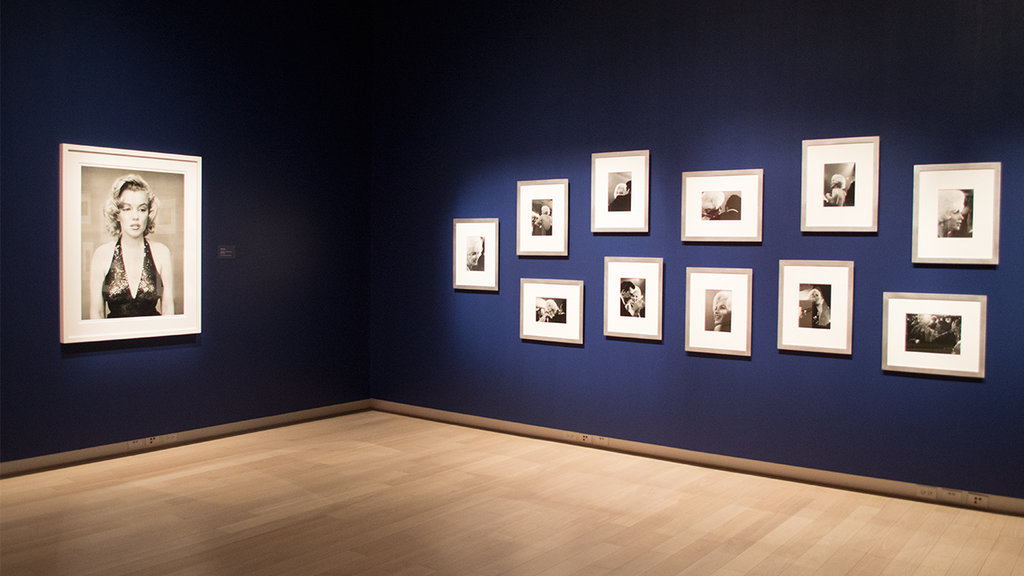 Portraits of Marilyn Monroe by Richard Avedon (left) and Gene Daniels (right)
Portraits of Marilyn Monroe by Richard Avedon (left) and Gene Daniels (right)
Glamour, the subject of RIC’s exhibition, is evident not only in the featured images of Monroe, or the prints of Annie Leibovitz and Edward Steichen, but also in the production of the images. Titled Photography and Glamour, I would argue that photography is as much the star as Marilyn herself. In his 1936 essay “The Work of Art in the Age of Mechanical Reproduction,” Walter Benjamin wrote, “In photography, exhibition value begins to displace cult value all along the line…. It is no accident that the portrait was the focal point of early photography. The cult of remembrance of loved ones, absent or dead, offers a last refuge for the cult value of the picture.” Photography became a tool to capture the stars, to immortalize them. The veneration of the celebrity was a crucial facet of twentieth century photographers, even in the fictionalized film stills of Cindy Sherman.
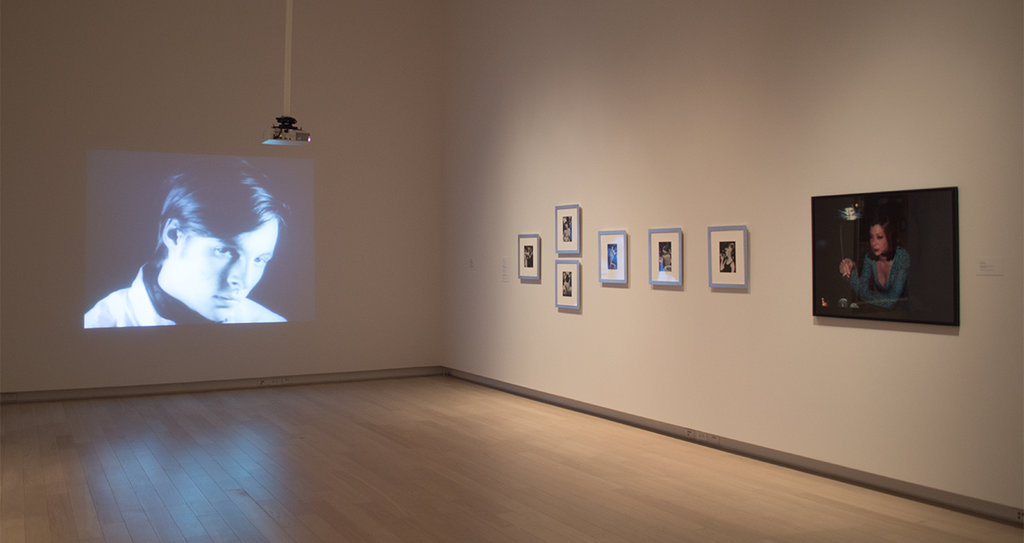 Still from Warhol’s Screen Tests, 1965 (left), Unknown Artists Portraits of celebrities (center) and Nan Goldin, Kathleen at the Bowery Bar, 1995 (right)
Still from Warhol’s Screen Tests, 1965 (left), Unknown Artists Portraits of celebrities (center) and Nan Goldin, Kathleen at the Bowery Bar, 1995 (right)
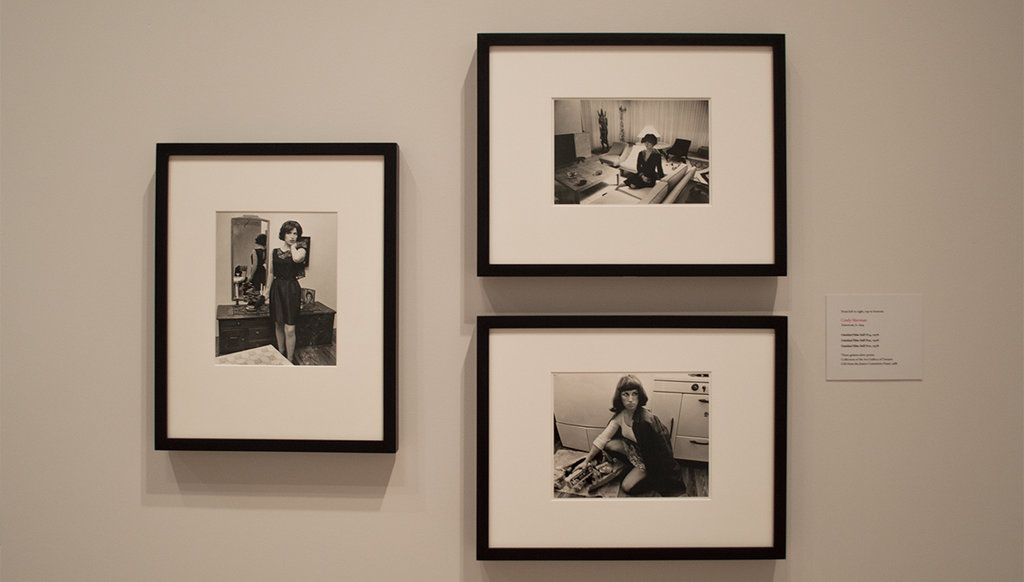 Cindy Sherman, Untitled Film Stills, #14, #50, #10, 19, 1978
Cindy Sherman, Untitled Film Stills, #14, #50, #10, 19, 1978
On loan from the Art Gallery of Ontario, five Cindy Sherman untitled film stills accompany the images of famous celebrities. In her fictionalized narratives Sherman takes on the role of a Hollywood starlet. Representing the narrative of glamour, Sherman represents the women pictured across from her.
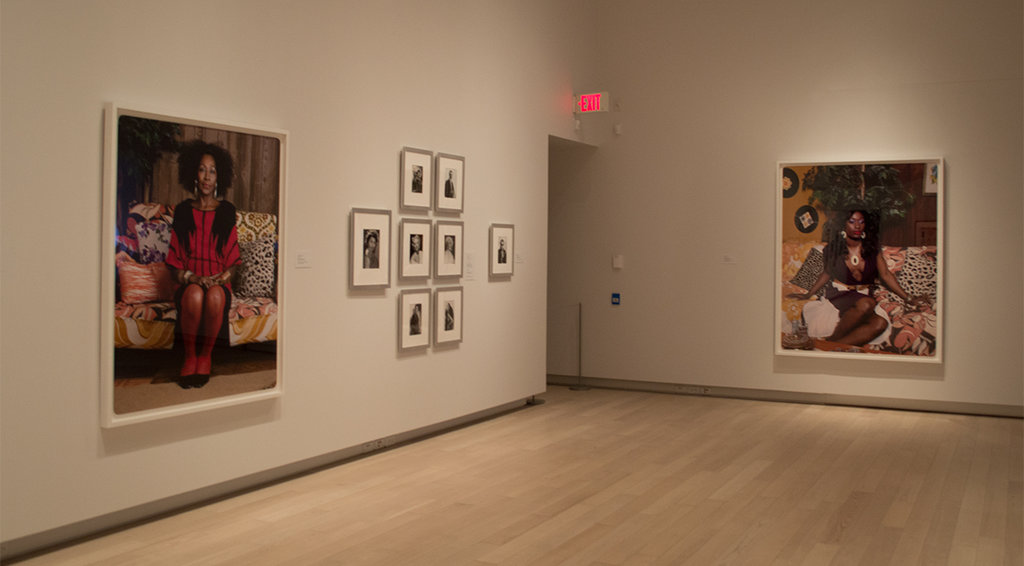 Mickalene Thomas, Sandra: She is a beauty, 2012 (left) and Portrait of Qusuquzah, 2008 (right)
Mickalene Thomas, Sandra: She is a beauty, 2012 (left) and Portrait of Qusuquzah, 2008 (right)
Paired with Burn with Desire, the RIC’s second exhibition, Anti-Glamour is set as a foil for the decorated celebrities in the main exhibition. Anti-Glamour features contemporary works that challenge the decorated adornment of celebrities. Rebecca Belmore’s Fringe (2008), one of the gallery’s most powerful images, hangs isolated near the wall text. A woman lies on her back with a deep gash; her wounds bring the viewer back into the real world representing the violence against aboriginal women throughout time.
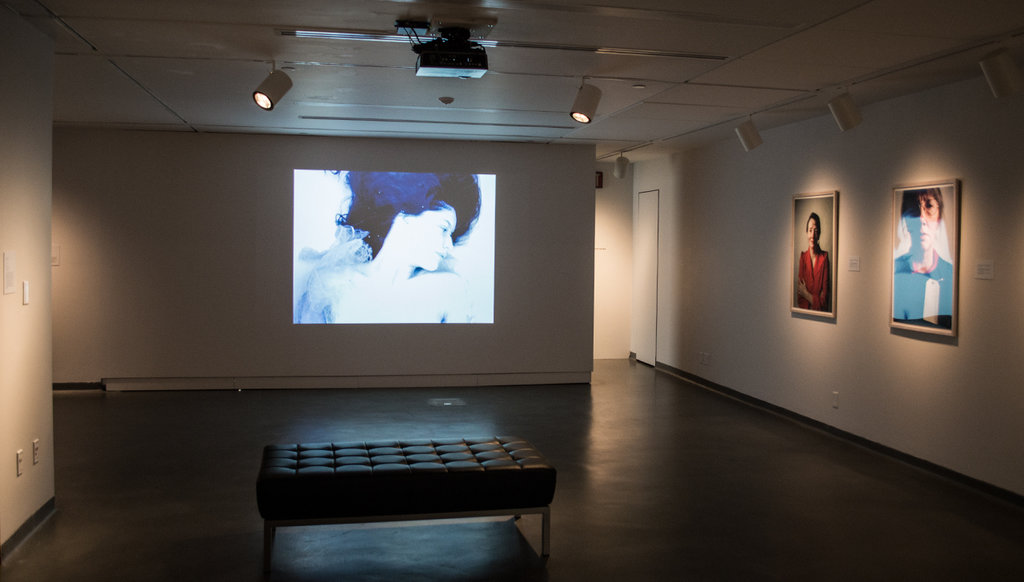 Ange Leccia, Nymphéa, 2007, video still (left) and Works of Jo Spence (right)
Ange Leccia, Nymphéa, 2007, video still (left) and Works of Jo Spence (right)
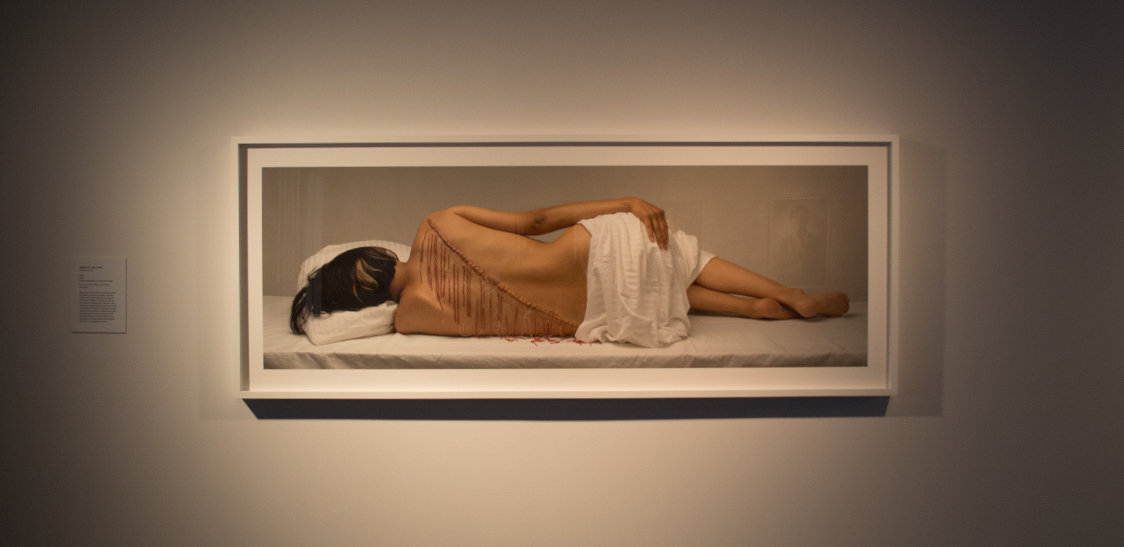 Rebecca Belmore’s Fringe, 2008
Rebecca Belmore’s Fringe, 2008
What Anti-Glamour seems to do then is contrast glamour with reality, providing grounding for the unattainable lifestyles featured in Burn with Desire. Both shows at the Ryerson Image Center feature strong photographic works of women with agency, yet at two polarities, forcing the viewer to face reality with the cult images of glamour past.
Text and photo: Brinae Bain
*Exhibition information: Burn With Desire: Photography and Glamour and Anti-Glamour: Portraits of Women, January 21-April 5, 2015, Ryerson Image Center, 33 Gould Street, Toronto. Gallery hours: Tue, Thurs & Fri 11 – 6, Wed 11 – 8, Sat & Sun 12 – 5 p.m.

